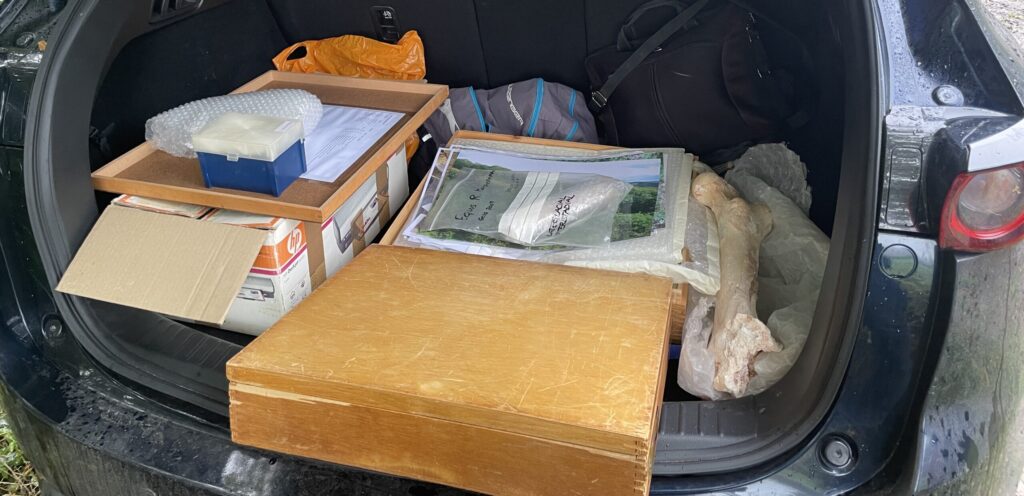
Gully Cave, Ebbor Gorge
Gully cave records hundreds of thousands of years of death. Myriad individual animals died here, or had their remains dragged in by other scavengers. Bison, aurochs, reindeer lie on top of woolly rhinoceros and mammoths. It is a nonhuman charnel house; a house of the animal dead like the catacombs beneath Paris. Many of the specimens are from animals now locally or nationally extinct, shuffling in and off as the world outside became inhospitable.
Gully cave provides a portal into past worlds; a muddy archive of deep time that can be dug and interpreted like the ice cores of polar research. It is a site for mourning, a place to be humble in the face of the inevitability of death, and a place to reflect on loss and extinction.
The cave was sealed at the end of the Pleistocene. It does not record the advent of modern humans, their domestic animals and commensals. It was capped before the great acceleration that led to the advent of the Anthropocene, or its ruination and the unravelling of nonhuman worlds. The sediment here comes as a tightly sealed time capsule from a pre-human age. We could take it as Nature and wilderness, in the ways that they are conceived by modern Western environmentalists, a past sealed in aspic untainted by human influence.
But in reflecting on extinction and Nature we can also see Gully cave as a site from which one might look to the future. It shows us worlds of animal diversity and abundance long unfamiliar to modern humans but still possible within the current and future climate envelope. It shows us that now foreign species were once here and native. That they could flourish here again. It allows us to reflect on which species coped with different climatic conditions, including those that adapted to the abrupt transitions of interglacial periods, where existence was threatened by climate changes on a decadal scale.
Gully cave offers us a ‘future-past’; it shows old ecologies that might be re-enacted in the future. These are informed by knowledge of the pure Nature of the Pleistocene, but they can be calibrated to the rupture and the new ecological conditions of the Anthropocene. It could be a source of hope; a portal through which we can imagine new futures at the contemporary juncture when time seems to out of joint.
How should a paleoecologist die? Notes while digging.
Spending time digging bones makes you think of your own remains, your afterlife, and how you will be found by others. Perhaps I will be crushed by a rock, slip down a cliff or end up in a pile-up on the M4. But what would I do if I was in control and wanted to ensure I was recorded right? How would I arrange my body for its excavation by future archaeologists? Should I be discrete and curl up like those women in the bog? Should I lie on my front to hide the parts one is not supposed to show? Should I splay myself star shaped to take up maximum space, and ensure my subsequent discovery: manspreading for future fame and glory. Perhaps it would be better not to be remembered, to become the type specimen of those responsible for the violence and loss that will be in my common strata? Hide somewhere no one will look? Burn me? Blast me into space?
